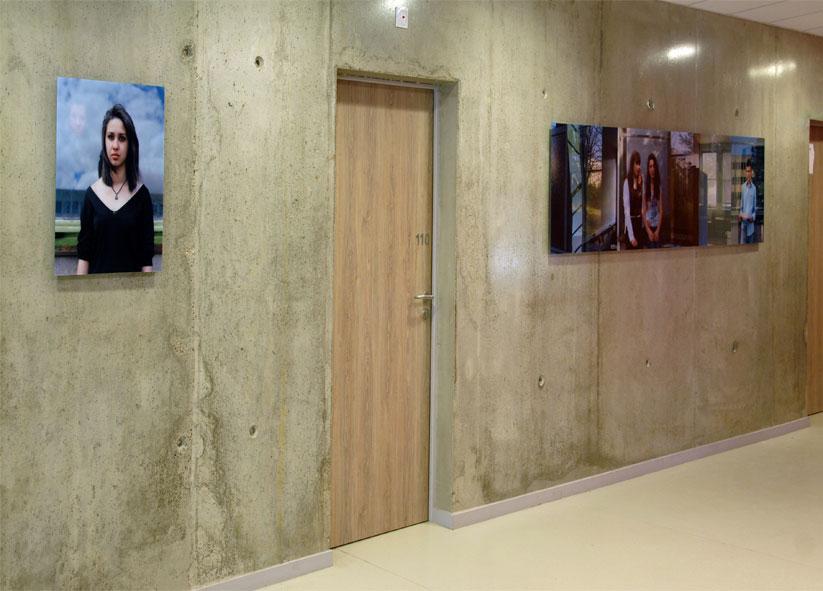
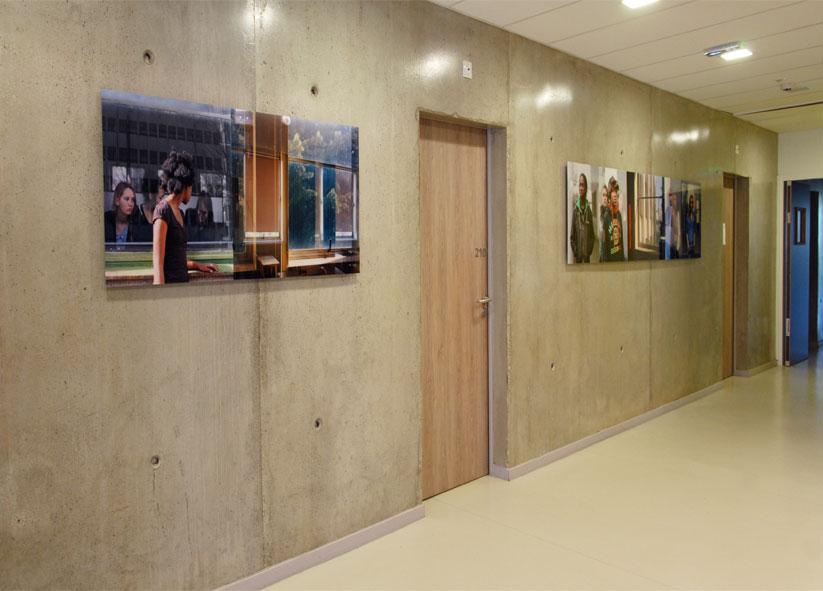
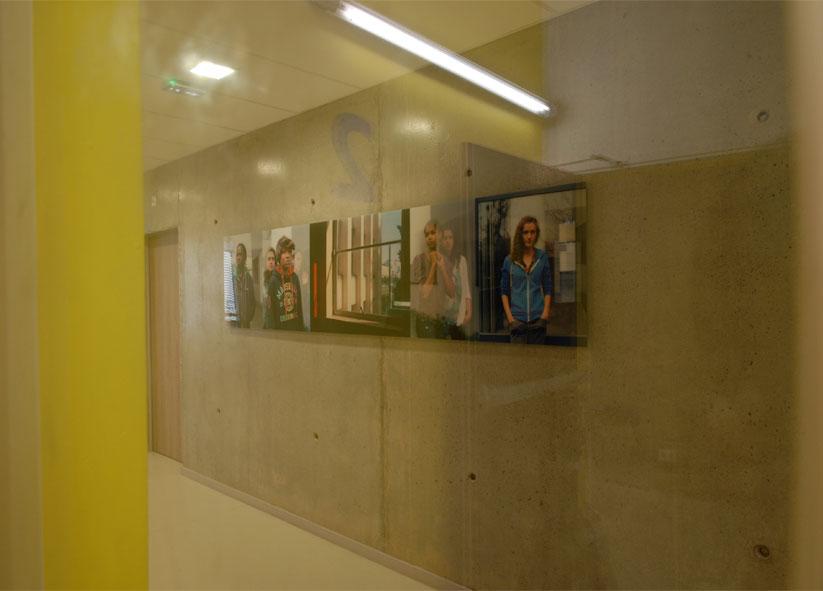
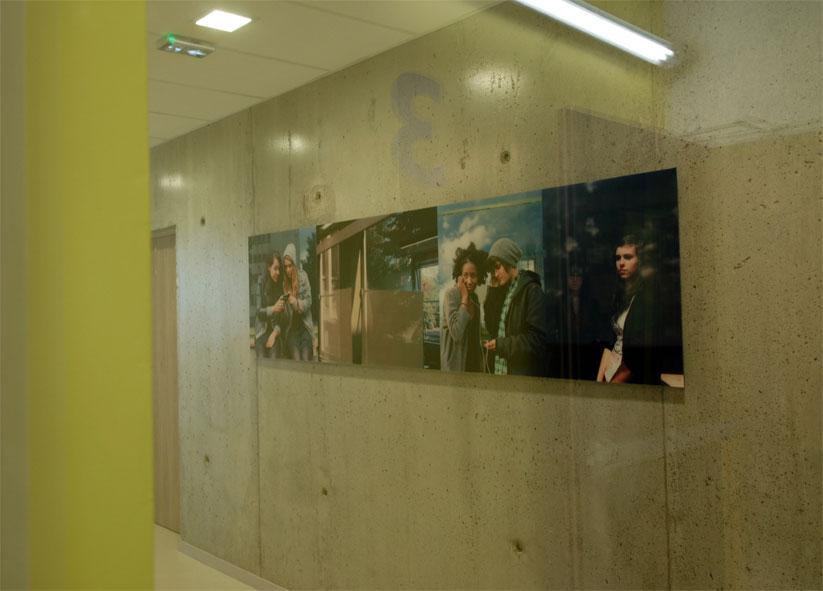
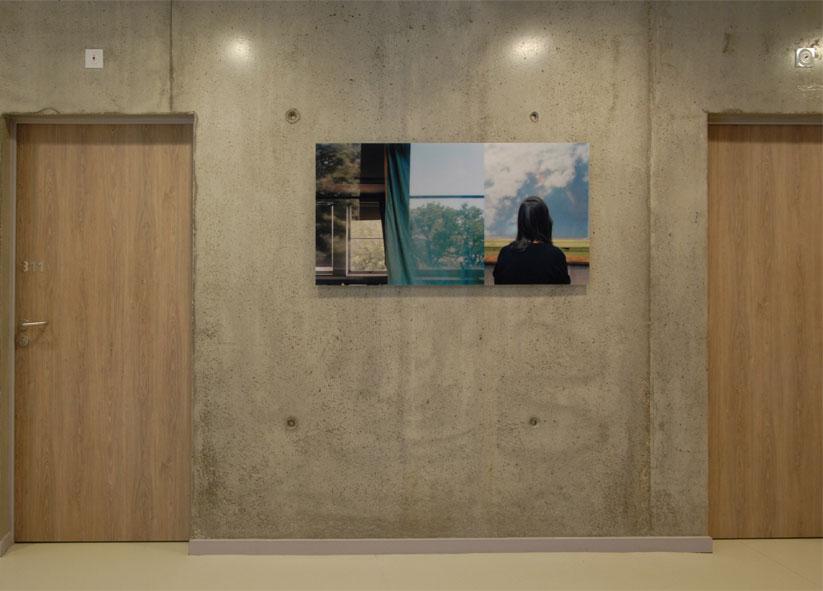
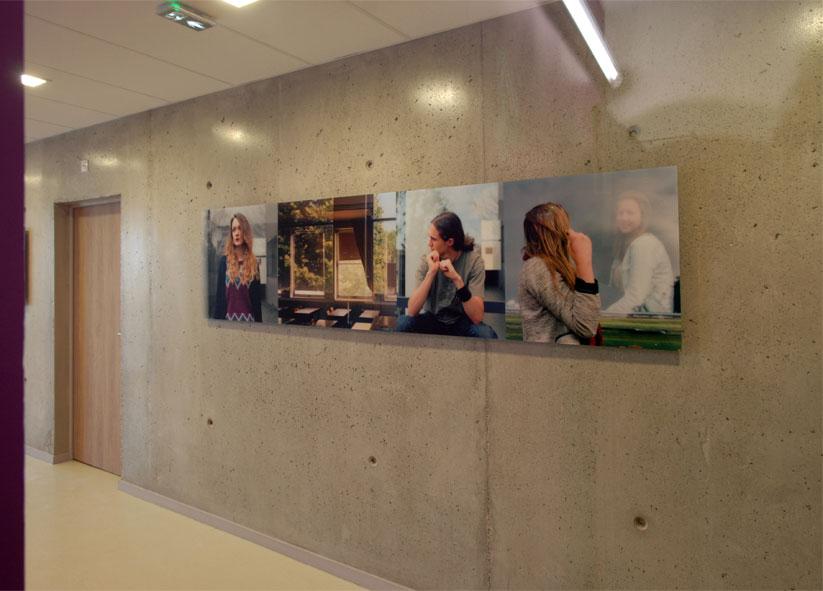
Éclaircie en hiver
Clearing in winter was produced as part of the residency at the Lycée Lumière
"The title is borrowed from the eponymous poem by Francis Ponge. The photographs were taken from December 2012 to April 2013, on the basis of the volunteering of second-year students, first and last year of high school, all sections combined. They are mounted in 5 polyptychs, 65 cm high and a length that varies between 235 and 427 cm. The set of 5 images constitutes a long ribbon of 18 m, printed on lambda photo paper, mounted on dibond and under plexiglass.
This set is placed under the sign of issues related to the representation of the human figure in collective spaces and to the image of adolescence. In Eupalinos or the architect, Paul Valéry makes Socrates say, in his dialogue with Phèdre, that “adolescence is singularly located in the middle of the paths”; the Greek philosopher tells him about this strange discovery he made, in his youth during a walk along the shore, of a strange object, indescribable in its shape and indefinable in its material, “of the same material as its form: matter for doubts”. The staging with the students takes place in the window recesses, both an analogon of the painting, but also a figure of the passage (they pose sometimes in front of, sometimes behind the glass), thus replaying the instability of their moods and the varying configurations of their inner states. In the glass of the window, the sky from elsewhere inscribes its own sentimental geography, made up of threatening clouds or iridescent colors. Attentive to the reflections imprisoned by the windows, I walk alone through the corridors of the school and I photograph, in a single shot in the bedroom, the images that cross the street and the courtyard of the school, passing through the classrooms. The windows constitute the essential element of this architecture of the 60s. The photographs thus produced capture the memory of these multiple states and also say that an architecture is alive and that it must revolve around “entering and exiting”. “The living, says Socrates in this same text by Paul Valéry, have a body which allows them to leave knowledge and to return to it. They are made of a house and a bee.” (YL)